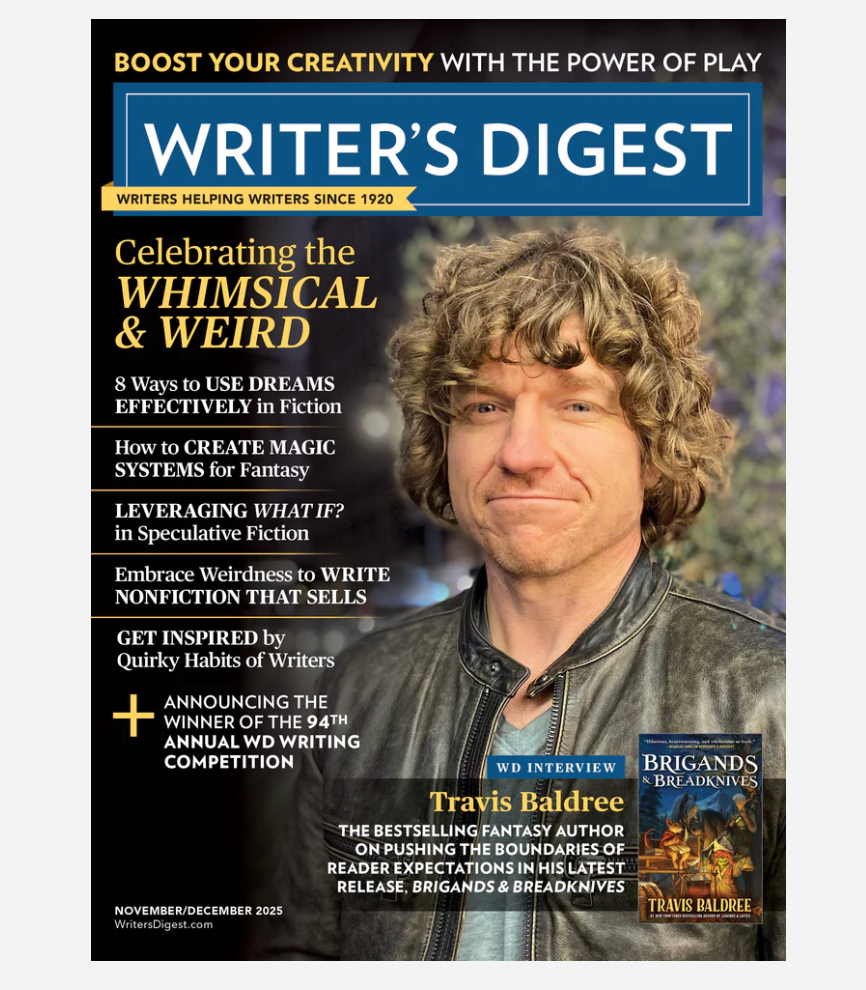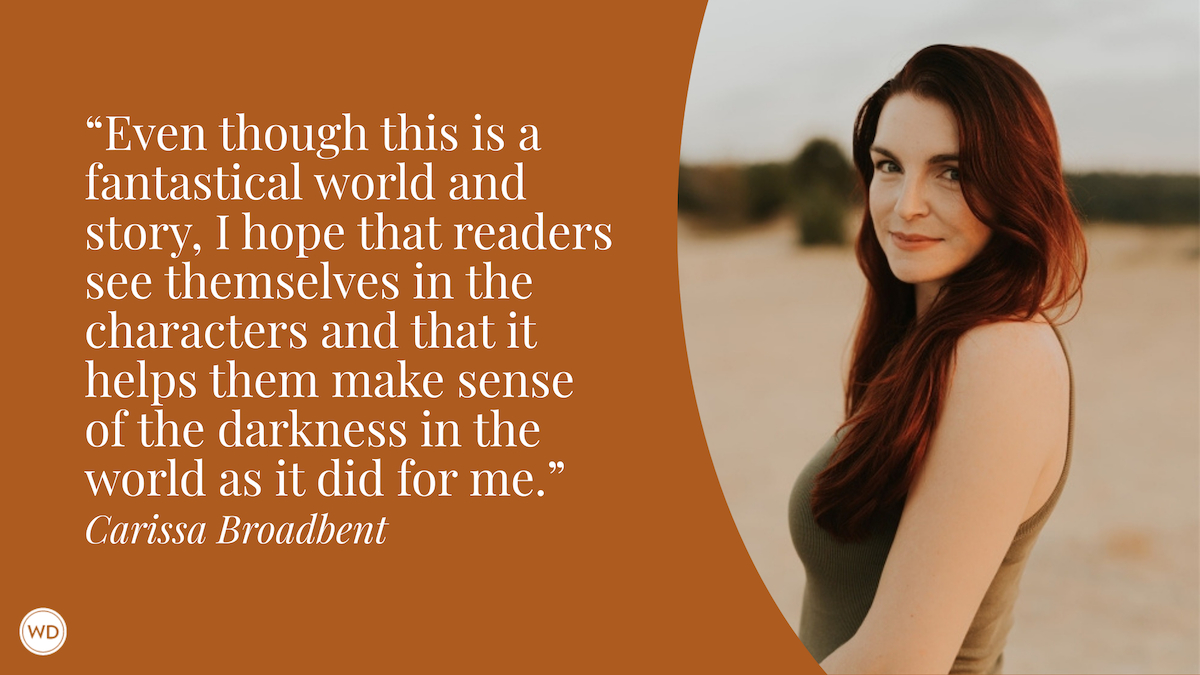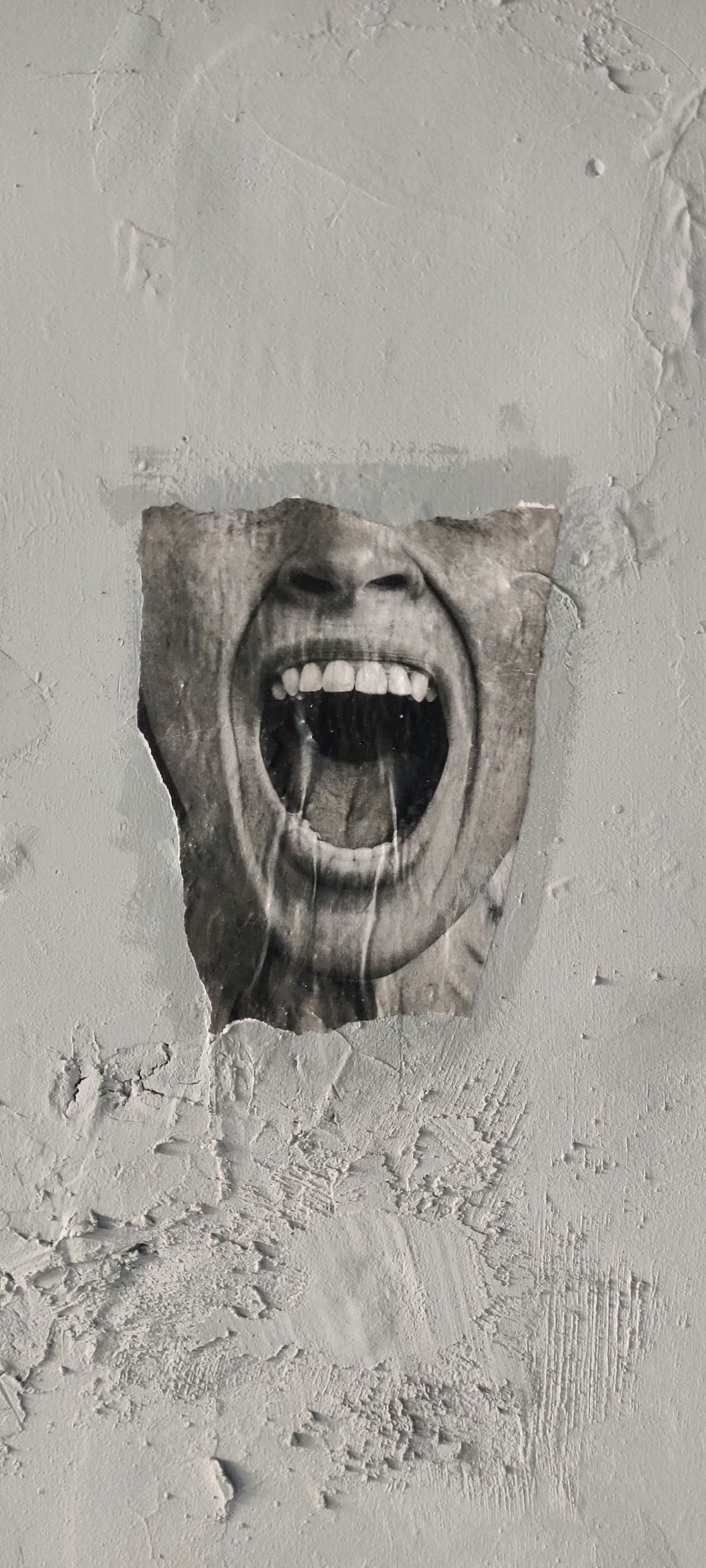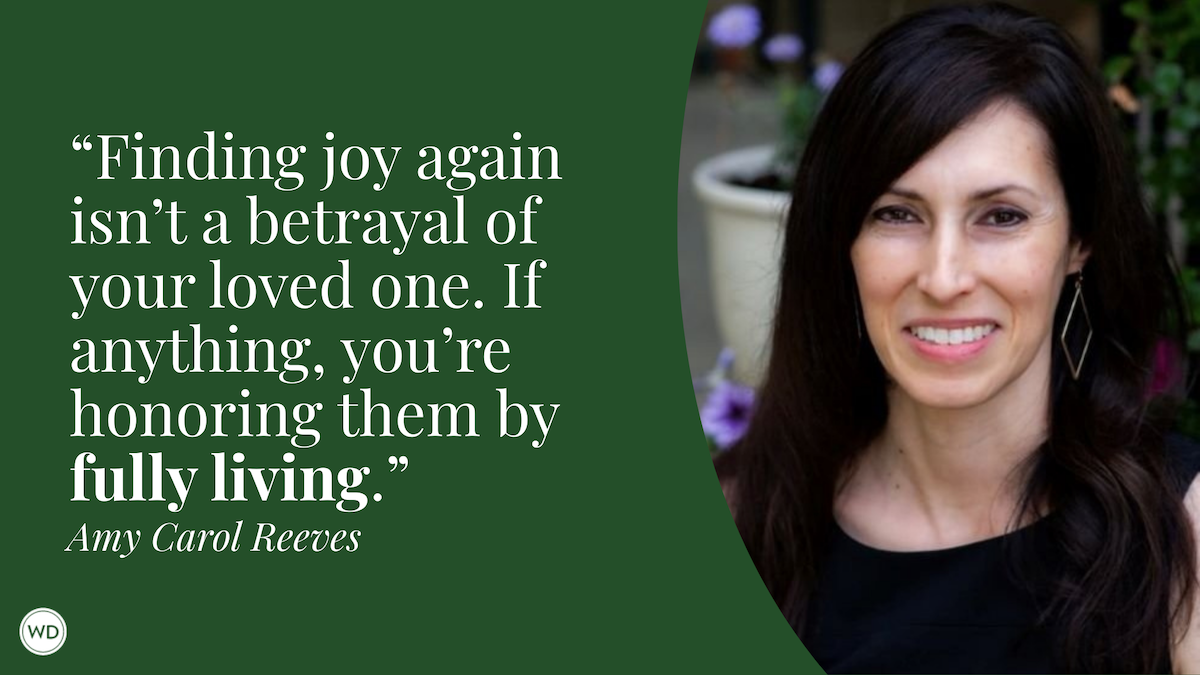Why Writing Your Passions Is So Important to Writers
After nearly four decades of writing, from nonfiction to fiction, author David Adams Cleveland shares the importance of not just writing what you know, but of writing with passion.
As young writers of fiction we were always advised to write about what you know. A perfectly reasonable assumption and common-sense starting point. But looking back on a career spanning almost 40 years—first as a journalist, then an art historian, and now mostly fiction—I realize that the crucial thing is to let your passions be your guide and inspiration.
And that doesn’t mean aspiring to be the next Hemmingway or Fitzgerald, for the magic and romance of the Jazz age, a writing life in Paris, or bull fights in Pamplona. As any good writer knows: Writing is a job like any other. If there is magic—even romance, and hopefully success, it comes about because you’ve not only got something to say but can say it with a depth of imaginative enthusiasm—and yes, passion for your subject matter. A heart and soul engagement with your narrative.
Looking back, I find the things that most captured my attention growing up—passionate attachments—all contributed in some way to my future writing life. Passions that were organic and evolved out of lived experience—not ginned up for a writing assignment. Although as a reporter, documentary writer, and interviewer (10 years as arts editor for Voice of America, where I also covered the Soviet Union and China) there were plenty of times I had to generate enthusiasms for uncongenial subjects. What this retrospective gaze tells me is that if the writing is any good it tends to be in response to a depth of feeling—the same feeling that your readers will hopefully take away from your pages.
George Inness, the great 19th-century American landscape painter, said it best: His only goal as an artist was for the viewer of his paintings to feel something. If not, he had failed as an artist. Writing out of your passions and deepest feelings means you are writing your true self—and hopefully sounding like yourself—not writing by the numbers as set forth in MFA programs, or narratives concocted around the writers’ table by a showrunner. The real thing is the thing that makes your voice distinctive and idiosyncratic. And your style will follow accordingly.
So where do these controlling passions come from?
Art Inspiring Art
I think back to the day as a grumpy teenager traveling in Europe with my family (and only wanting to get back on the tennis court: my first passion) when my patient mother took me in hand to view the mosaics in Ravenna. Something happened: It was love at first sight. The scintillating color, the ravishment of intricate patterns in glittering gold and green and lapis lazuli—and the age!
My mother sat me down in the nave of the Basilica of Saint Apollinaire (scent of incense and burning candles—the mysterious flickering light) and sketched out on the back of a postcard the four classical order of columns: Tuscan, Doric, Ionic, and Corinthian, and then explained how the Byzantine columns of the basilica evolved from all four. Soon I was writing high school reports on the mosaics, then taking studio courses, then in college studying art history, eventually going on to write art history books (A History of American Tonalism: Crucible of American Modernism, Abbeville Press), and helping my son Carter, founder of Artsy.net.
Two controlling passions emerged from my involvement in the art world and writing about art: a fascination with Venice, where the art and architecture are alive as nowhere else; and an abiding love for turn-of-the-century American landscape painting (Tonalism and the Tonalist Movement). And so the inspiration for my first novel, With a Gemlike Flame, which is set in Venice and stared a disillusioned art dealer, Jordan Brooks, who travels back to Venice (where he confronts his earlier better self) in pursuit of a lost Raphael Madonna and Child.
Looking back on that first novel, I can see that it contained all my early passion for art and a city that is an artwork itself. It was written at white heat. I still hear from readers, Venice aficionados, who find it one of the best fictional evocations of la Serenissima. When I wrote the novel, I had visited Venice many times, wandered the lagoon city until I dropped—and so managed a transfusion of my youthful ardor onto the page.
I could not write that novel now, the sustaining power of that early passion has somewhat dimmed (an age thing and Venice, too, has changed, and not for the better), even as Venice continued to play a role in my next two novels, Love’s Attraction and Time’s Betrayal, making a cameo appearance in my latest, Gods of Deception. I think it is fair to say that one should not expect to work off one’s earliest passions throughout a career, because those passions will necessarily atrophy with time and hopefully be replaced by others, which in turn will replenish the emotional energy and enthusiasm for new fictional ventures. Examples of writers who have gone back to the same well of inspiration too many times are legion, and like many painters who exhaust their subject matter and signature style, their later works are dry and feel like they’ve been phoned in.
This is all to say that with any luck the writer will keep on discovering new passions, and so fresh subject matter as their careers develop. But again, I’m not sure one can simply hunt around and hope to catch a falling star. The thing has got to find you, which may be another way of reframing the famous Henry James dictum: “Try to be one of those upon whom nothing is lost.”
New Passions, New Paths
For me, another turn in the road came out of my years of studying ballet (a new challenge after playing intercollegiate tennis). I think I probably started taking ballet class to improve my social life (where I met my wife: a great side benefit!), and ended up doing character roles with the Washington Ballet, and parlayed that into my first art writing gigs reporting on the ballet world for Dance Magazine and Ballet News.
Culminating in the creation of my heroine in Time’s Betrayal, who is a dancer with American Ballet Theater, nearing the end of her career and plagued by injuries as she is slowly replaced in her most important roles by younger dancers. My love of ballet energized my elucidation of Laura Williams’ character, infusing her romantic involvements with a sometimes-bitter realism and poignant depth—an edge of sadness as injuries mount and a career begins to close down.
And then there is Thoreau. As part of my interest in the history of American Tonalism, I became enamored with the world of Thoreau and Emerson, especially the town of Concord, where both had lived and drew much of the inspiration for their writings. Which led me to the writing of my second novel, Love’s Attraction, set in contemporary Concord (and Venice in the second half) which layers in the world of Thoreau by having a main character who is not a little obsessed with the poet and naturalist and once-upon-a-time resident of Walden Pond. It was also a way of contrasting the historical Concord of the Transcendentalists and the mill city of Lowell only a few miles up the Concord River.
Something I managed to get on the page by having Michael Collins come from a blue-collar background in Lowell and win a scholarship to a fancy prep school in Concord, where his life and aspirations go off the rails. What saves him is his abiding passion for Thoreau, which returns him years later to Concord where he discovers the strange and tragic truth about his past, sparking his search through time for his lost love. Without my own obsession with Thoreau and Concord that novel could never have been written.
Combining What You Love
And then there’s the knock-on effect as one passion elides into another.
In this case, my fascination with Thoreau, especially the naturalist writing in his journals, along with an absorption in the art of Tonalist painters like George Inness and Dwight Tryon (emphasizing atmospherics, subtle patterns of light and color, the spiritual depths of landscapes at dawn or dusk) began to infuse my writing style. I found myself taking great care to set my scenes, describing in detail the type of landscape, the quality of light and weather, the feeling of a certain season: colors, smells, tastes—the afterglow of place that lingers long after the plot and characters have been forgotten.
Something I owe not just to writing about landscape painting, but to the superb rendition of emotional climates and places in the writing of Joseph Conrad. I cannot imagine having the emotional energy to set a scene, much less write a novel without an emotional investment in time and place—spacetime, I suppose. Like great sex, it is hard to fake. And when the energy level is low, the passion wavering, the writing does not come.
With the publication of my fourth novel, Gods of Deception, about the Alger Hiss spy trial of 1950—“the trial of the century,” I’ve often been asked in interviews how this novel came about. My answer has been that I became fascinated with how the trial divided the country for two generations, half the country believing Hiss was innocent and the other that Hiss was guilty of treason. But this fascination was not enough in itself to make possible the writing of the novel. For it to work for me, the action and the plot had to be set in a landscape to which I was drawn, the Catskills of my youth.
IndieBound | Bookshop | Amazon
[WD uses affiliate links.]
Two of the three protagonists who investigate the crimes of Hiss and his KGB handlers do so through the prism of astrophysics and the acute vision of a figurative artist. I can’t say that I’m wildly passionate about astrophysics, although I’m getting there, but my two sons, who graduated from college in physics and engineering, certainly are. So in the case of George Altmann, my astrophysicist in Gods of Deception, I’m channeling both the preoccupations of my sons’ generation and their near-obsession growing up with matters scientific. The science kids their father never was but still aspires to be.
Although Gods of Deception touches on political subjects, the left-right divide over the conviction of Alger Hiss for spying, I’m skeptical about political or ideological passions being the basis of great novels. Or at least novels that take partisan sides. The best fiction should not show bias but allow the various characters to live out their lives according to their lights, and so allow the reader to fully experience the humanity of those characters—the common humanity that unites more than it divides.
This is not to say that certain passionate attachments can’t be conjured up out of whole cloth by a skilled writer, but I think this gets harder and harder, especially for writers of a certain age. I am reminded of an essay by Kenneth Clark, the great art historian, who compared the late work of painters and writers, wondering which group faired best. His take was that great painters in old age are better placed because their inspiration is more visceral, while writers, because they tend to employ more cerebral responses, drawing on interior emotional energies, struggle in old age and fade from the scene earlier. I’m a little haunted by that essay because I suspect it is true; and I’m conversant with both worlds.
In my own case, there have been passions that have never found their way into my work. I played classical guitar for many years, when I became obsessed—there does seem a pattern here!—with Andres Segovia at 15. Somehow, I’ve never found a fictional setting for a classical guitarist and the fascinating subculture of the guitar world. The other was tennis which I played competitively through college. I actually wrote a few drafts of a tennis novel about an American tennis player who makes his breakthrough at the French Open in 1975 and then gets caught up in Pol Pot’s takeover of Cambodia (don’t ask). Maybe I’ll try to revive that manuscript someday.
But in the meantime, tennis is making a comeback in my fifth novel about a college reunion where four women teammates from a championship tennis team return to campus and relive their earlier triumphs and failures. Writing about these women and their days playing intercollegiate tennis has revived my long dormant passion for the game; and, I hope, infuses the writing and the characters with the kind of love and energy that will bring them to life on the page.
And, oh yes, Venice is reprieved as well. The oratory of the Scuola di San Giorgio and its gorgeous Carpaccio’s, where my mother once sat me down and patiently explained about Saint George’s dragon, Jerome’s lion, and a delightful menagerie consisting of a red parrot, a German spitz, and a patient long-nosed Borzoi.
Who could have guessed!
David Adams Cleveland is a novelist and art historian. His latest novel, Time’s Betrayal, was named Best Historical Novel of 2017 by Reading the Past. In summer 2014, his second novel, Love’s Attraction, became the top-selling hardcover fiction for Barnes & Noble in New England, and Fictionalcities.uk included Love’s Attraction on its list of top novels for 2013. His first novel, With a Gemlike Flame, drew wide praise for its evocation of Venice and the hunt for a lost masterpiece by Raphael. His most recent art history book, A History of American Tonalism, won the Silver Medal in Art History in the Book of the Year Awards, 2010; and Outstanding Academic Title 2011 from the American Library Association; it was the bestselling American art history book in 2011 and 2012. David was a regular reviewer for Artnews, and has written for The Magazine Antiques, the American Art Review, and Dance Magazine. For almost a decade, he was the Arts Editor at Voice of America. He and his wife live in New York where he works as an art adviser with his son, Carter Cleveland, founder of Artsy.net, the new internet site making all the world’s art accessible to anyone with an internet connection. More about David and his publications can be found, here, on his author site davidadamscleveland.com/









